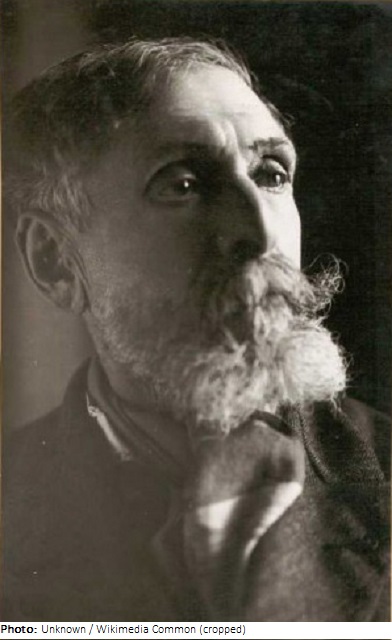George Desvallières

Biographical information
| Roles | Referee |
|---|---|
| Sex | Male |
| Full name | Olivier Gabriel Victor Georges•Lefèbvre-Desvallières |
| Used name | George•Desvallières |
| Born | 14 March 1861 in Paris IIe, Paris (FRA) |
| Died | 5 October 1950 in Paris IIe, Paris (FRA) |
| NOC |  France France |
Biography
George Desvallières came from an art-loving, bourgeois, religious family. After graduating from high school, he took up studies at the Académie Julian in Paris and was trained in painters’ studios. In 1882 and 1884 he traveled through Italy. In 1883 he made his debut at the Salon des Artistes Français, where he was regularly represented with portraits but also already with religious motifs.
After his marriage in 1889, Desvallières received several awards at the salons. However, some of the corresponding works have disappeared. After the death of his friend, the symbolist Gustave Moreau (1826-1898), he went through a difficult phase around 1898, during which he painted mainly mundane portraits and themes from mythology or antiquity. In 1901, he changed to the Salon of the Société national des Beaux-Arts. From 1902 he increasingly turned to contemporary subjects. During a three-month stay in England, the artistic reorientation was completed.
Back in Paris in 1903, together with other painters Desvallières founded the Salon d’Automne, of which he became president in 1936. From 1905/06 he was friends with the music critic Jacques Rouché (1862-1957), who commissioned him in the following years to make a number of decorative paintings for his private home, Desvallières’ last mythological paintings.
From 1907, he worked alongside Maurice Denis for the magazine Grande Revue, owned by Rouché. He also designed the poster for the Exposition international d’Art religieuse in 1911. Under the influence of Rouché, owner of the Théâtre des Arts, he became also interested in the art of drama and presented, for example, models for decorations and costumes at the Salon d’Automne in 1913. His deep Catholic faith gained even more importance with his admission in 1913 as a lay brother to the Order of Saint Dominic.
During World War I, Desvallières was an active volunteer and was only able to resume painting as the commander of a prisoner-of-war camp in the final months of the war. After the loss of his son at the front in 1915, he devoted himself exclusively to religious themes, mainly to decorative works for sacred buildings. Together with Denis, he founded the Ateliers d’art sacré in 1919 to renew religious painting in France.
From 1920, Desvallières also created book illustrations. In 1929, he assumed the position of curator at the George Moreau Museum. In 1930, he was elected as a member of the Académie des Beaux-Arts and was appointed Commander of the Legion of Honor. At the 1937 International Exhibition, the city of Paris honored him as part of the so-called Exposition des maîtres de l’art indépendant.
Referee
| Games | Sport (Discipline) / Event | NOC / Team | Phase | Unit | Role | As | |
|---|---|---|---|---|---|---|---|
| 1924 Summer Olympics | Art Competitions |  FRA FRA |
George Desvallières | ||||
| Painting, Open (Olympic) | Final Standings | Judge |